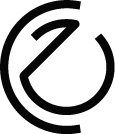How could art and design comment on the aid-beneficiary relationship?
Art as political commentary I On the re-use of Netherlands’ old-bikes in the refugee camp
Within the frame of the aid- beneficiary relationship we wonder who benefits and in which way from the transaction. While this does not assert a relationship based on profit, it necessitates a degree of transparency to avoid potential issues of moral and social misconduct. Discussing the nuances around the aid-beneficiary relationship could better inform the future negotiations between entities.
Sera Tolgay & Hugh Magee
Example : Bikes from Amsterdam and Water Carts at Al Azraq
One can read the story of the old bikes shipped from Amsterdam to refugee camps in Jordan in multiple ways. From one viewpoint, it is a generous donation that supports the needs of refugees. In the refugee camp, bikes are disassembled to their components and reused as carts for the transportation of water (see pic). From another point of view, the city of Amsterdam benefits as well. In return for donating old bikes, the government officially responds to a UNHCR call while also addressing waste-management.
How could art and design comment on the aid-beneficiary relationship? One way would be to develop the design of carts further. Another approach would be to reciprocate the action of aid. For instance, what if trash from the camp were reconstituted into an infrastructural project in Amsterdam?
Sera Tolgay & Hugh Magee






